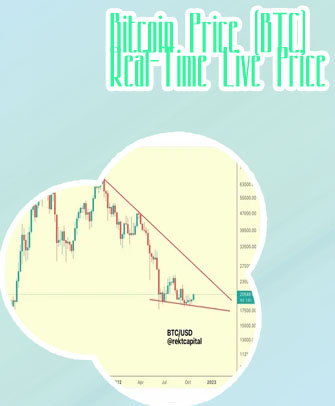
Bitcoin cost is a topic of interest for many investors and enthusiasts in the cryptocurrency world. Understanding the factors that influence the price of Bitcoin can help individuals make informed decisions when it comes to buying, selling, or holding onto their digital assets. The following articles provide valuable insights into the various aspects of Bitcoin cost, including market trends, price predictions, and analysis of key factors affecting its value.
Bitcoin cost is a topic of interest for many investors and enthusiasts in the cryptocurrency world. Understanding the factors that influence the price of Bitcoin can help individuals make informed decisions when it comes to buying, selling, or holding onto their digital assets. The following articles provide valuable insights into the various aspects of Bitcoin cost, including market trends, price predictions, and analysis of key factors affecting its value.
Analyzing the Factors Influencing Bitcoin Price Fluctuations

Bitcoin price fluctuations have been a topic of great interest and debate among investors and analysts worldwide. Understanding the factors influencing these fluctuations is crucial for making informed investment decisions in the volatile cryptocurrency market.
One key factor affecting Bitcoin price is market demand. As more people become interested in investing in Bitcoin, the demand for the digital currency increases, driving up its price. Additionally, factors such as macroeconomic trends, regulatory developments, technological advancements, and investor sentiment all play a role in shaping Bitcoin's price movements.
One practical use case that showcases the impact of these factors is the recent surge in Bitcoin price following the announcement of a major financial institution investing in the cryptocurrency. This positive news boosted investor confidence and led to a significant increase in Bitcoin's value, resulting in profitable returns for those who had invested in the digital asset.
In conclusion, analyzing the various factors influencing Bitcoin price fluctuations is essential for navigating the dynamic cryptocurrency market. By staying informed and monitoring market trends, investors can make better decisions and capitalize on opportunities for profit in this rapidly evolving space.
Bitcoin Cost: A Historical Perspective and Future Projections
Bitcoin, the first and most well-known cryptocurrency, has seen significant fluctuations in its value since its inception in 2009. The price of Bitcoin has experienced both rapid growth and sharp declines over the years, making it a volatile asset for investors. In this article, we explore the historical cost of Bitcoin and provide insights into its future projections.
Looking back at the early days of Bitcoin, it is remarkable to see how far it has come in terms of value. In 2010, the price of Bitcoin was less than $0.01, but by 2017, it had reached an all-time high of nearly $20,000. This exponential growth captured the attention of investors worldwide, leading to a surge in interest in cryptocurrencies.
However, the price of Bitcoin has also seen significant drops, with the value plummeting to around $3,000 in 2018. This volatility has made many investors wary of Bitcoin as an investment, with some labeling it as a speculative bubble. Despite these fluctuations, many experts believe that Bitcoin still has the potential for long-term growth, citing its limited supply and increasing adoption as reasons for optimism.
As a resident of a bustling city in World, John Smith from Tokyo shares his perspective on Bitcoin's cost. He believes that while the price
The Impact of Market Sentiment on Bitcoin Cost
The volatile world of cryptocurrency, particularly Bitcoin, is highly influenced by market sentiment. Market sentiment refers to the overall feeling or attitude that investors have towards a particular asset, such as Bitcoin. This sentiment can be positive, negative, or neutral, and it plays a significant role in determining the price movements of Bitcoin.
One of the most notable examples of market sentiment impacting Bitcoin cost was the bull run of 2017. During this time, Bitcoin reached an all-time high of nearly $20,000, driven largely by positive market sentiment. Investors were optimistic about the future of Bitcoin and were willing to buy in at high prices, driving the cost even higher.
Conversely, negative market sentiment can also have a drastic impact on Bitcoin cost. In 2018, Bitcoin experienced a significant price drop, falling from its all-time high to around $3,000. This drop was largely due to negative market sentiment, as investors became fearful of the future of cryptocurrency and began selling off their holdings.
Famous investors such as Warren Buffett and Mark Cuban have also weighed in on the impact of market sentiment on Bitcoin cost. Buffett has famously referred to Bitcoin as "rat poison squared," indicating his negative sentiment towards the cryptocurrency. Cuban, on the other hand, has expressed more positive views on
Strategies for Managing Bitcoin Volatility and Maximizing Profit
In the world of cryptocurrency, Bitcoin stands out as the most well-known and widely traded digital asset. However, the extreme volatility of Bitcoin prices can present challenges for investors looking to maximize profit. This is where strategies for managing Bitcoin volatility come into play.
One such strategy is dollar-cost averaging, which involves investing a fixed amount of money at regular intervals, regardless of the current price of Bitcoin. This approach can help mitigate the impact of short-term price fluctuations and reduce the risk of buying at a high point.
Another popular strategy is setting stop-loss orders, which automatically sell Bitcoin if its price falls below a certain threshold. This can help protect investors from significant losses in the event of a sudden price drop.
Additionally, diversifying a cryptocurrency portfolio can help spread risk and potentially increase profits. By investing in a variety of assets, such as Bitcoin, Ethereum, and other altcoins, investors can reduce their exposure to any single asset's volatility.
Overall, successfully managing Bitcoin volatility requires a combination of careful planning, risk management, and a deep understanding of the cryptocurrency market. By implementing these strategies, investors can navigate the ups and downs of the market and position themselves for long-term success.
